You'll need these products to prevent mould in your home this summer
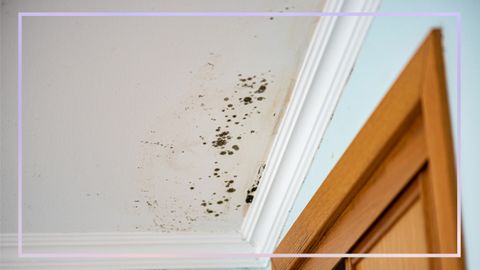
Mould in the home is no joke. It's unseemly and smelly, and a pain in the you-know-what to get rid of. Not to mention a threat to our personal health and safety.
As we come into another Australian summer and the humidity begins to rise in our cities and towns, mould becomes an ever-increasing threat.
So, how can we go about preventing it?
We spoke to Scott Lambert, Managing Director of Doctor Damp, to ask how we can best keep mould at bay. And what to do if the familiar green and black starts creeping back.
How to get rid of mould
"The first thing is, if you have someone who is allergic to mould or someone who is having health effects from the mould, then they really shouldn't stuff around," Lambert says. Call in the professionals to get it treated properly.
However, it might be possible to treat household mould yourself, as long as you follow a few key recommendations. For starters:
Steer clear of bleach. Bleach is most effective on tiles or hard, non-porous surfaces, which is why it's used so much in bathroom and kitchen cleaning. But when it comes to mould throughout the rest of your home, Lambert isn't convinced.
"In my experience, what bleach does is it bleaches the mould so you can't see it," he says. "Bleach will kill the mould but you need a dangerous level of bleach in order to do so." Professionals like Doctor Damp and other mould removal specialists have access to that kind of superpower bleach, but it isn't generally for public sale.
Steer clear of sugar soap too. Lambert tells a story from 20 years ago, when sugar soap and water used to be a common way to get rid of mould in homes. He used the method for a client at that time and received an unhappy call five days later.
"The mould had come back even worse than what it was when we cleaned it off. The sugar soap actually, I think, becomes a kind of food for the mould," Lambert says.
Wear a mask and gloves. Cleaning mould isn't a chore to be taken lightly. "The other mistake people make is attempting to kill mould, or killing it, without even realising the poisonous gas the mould puts off when they kill it. So it's very important they have the right respiratory-type device for breathing around mould," he says.
Try vinegar and water. A tried and true method is an 80 per cent vinegar and 20 per cent water solution. Spray it onto the mould and wipe it off, then get to work reducing the moisture in the problem area.
Products best suited to removing mould
NOTE: Prices are accurate at the time of publishing.
Pro Choice Safety Gear Dust Mask P2
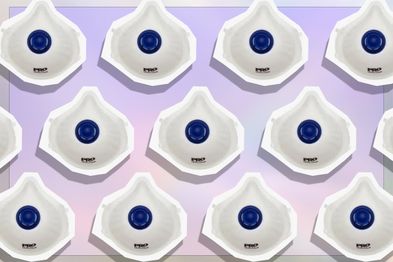
You have to be serious about your safety when cleaning mould. So no, wearing a P2 mask while you do so is not extra. Those pesky little spores that fly into the air when you start agitating the mould are dangerous and can cause a whole range of health problems — especially if you have asthma or another respiratory disease.
Buy the masks and use them, please!
Sabco Nitrile Disposable Gloves, Medium
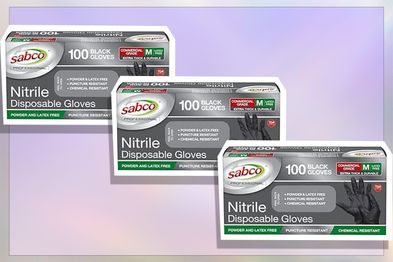
Same goes for gloves. Be on the safe side and stretch on a pair when handling anything mould-related.
Amazon Basics Microfibre Cleaning Cloth
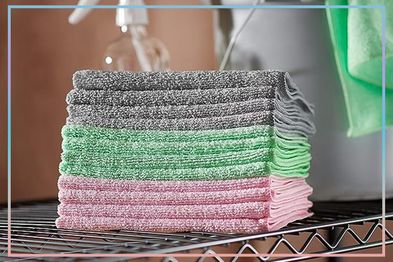
In our research, we discovered microfibre cloths are the way to go when wiping up mould. They have the neat capability to pick up lots of minuscule dust particles. Use one for wiping off the mould and another for drying the surface.
Concrobium Mould Control Spray
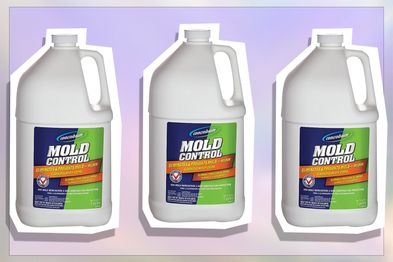
This mould spray is bleach-free and one of the few products that specifically targets mould on walls and other porous surfaces.
It's also highly reviewed. One of our favourites, lamenting about the mould and musty damp in a certain part of their house, reads: "I tried everything short of tearing down that part of the house and rebuilding it to get rid of [the mould] but nothing worked. CONCROBIUM DID!!!!" (Caps lock and exclamation points theirs.)
Importantly, if none of these tips work, make sure you enlist the help of a professional mould-cleaning service. If the problem is really serious, it's best to outsource to the experts.
How to prevent mould
"Mould is a living organism," Lambert reminds us. "Damp and moisture is the food for the mould. They go hand in hand."
Once you've gotten rid of the mould, it's even more important to invest in some tactics to make sure it doesn't come back.
Essentially, to prevent mould, you'll need to reduce the amount of moisture in your home. This means increasing the airflow by frequently opening doors and windows and using exhaust fans when you shower and cook. A good dehumidifier will help this process, as well as a couple of moisture absorbers.
Lambert also recommends picking up an air purifier with UVC light built in. The UVC light will kill the mould spores as they're sucked in, unlike other purifiers which may just trap the mould for them to grow further. They'll continuously clean the air, making sure those pesky spores don't have a chance to latch and grow around the home.
Products we recommend
NOTE: Prices are accurate at the time of publishing.
Ausclimate NWT Supreme All Seasons 50L Dehumidifier

Ausclimate gets our top pick for the highest-rated and most well-reviewed dehumidifier for Aussie seasons. One reviewer said it even took their Top-End Queensland home from 100 per cent humidity to 50 per cent in three hours. "One of the best purchases we've ever made," they wrote.
While admittedly on the pricier side, we suggest the Ausclimate NWT Supreme All Seasons 50L Dehumidifier for its versatility and proven effectiveness. This model can hold an impressive 50 litres and also has an auto-drainage system. It's also whip-smart, with an LED screen and different control settings. If you want a one-stop-shop, fix it solution, this is worth the investment.
Ionmax ION610 Desiccant Dehumidifier
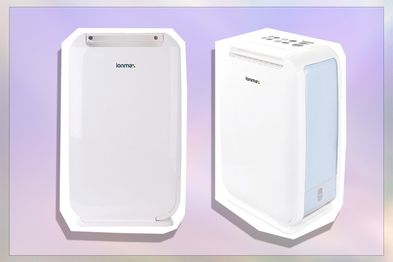
The Ionmax ION610 Desiccant Dehumidifier can capture and store up to six litres of moisture at a time. It also has an anti-allergen air filter that's washable and an automatic shut off point when the air has reached the right level of humidity. Reviewers have also commented that it comes with a decent warranty.
While it's not made for large spaces, it's perfect for a bedroom or study and really, at its price point, it's a safe bet compared to the more pricier models.
YEATHER Fragrance Free Moisture Absorber, 12-pack

For wardrobes, pantries and other nooks and crannies prone to moisture, chuck an absorber in there. These things are great at lapping up and storing any excess water. Depending on the level of humidity, it's best to replace them every three or four weeks, which is why buying in a multi-pack is the way to go.
Dreamegg True HEPA Air Purifier
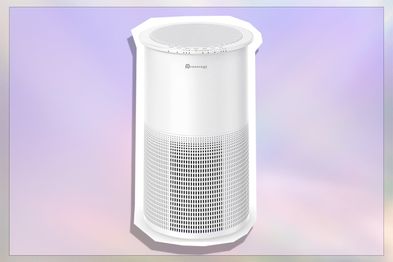
The Dreamegg True HEPA Air Purifier gets our pick for its great price and impressive power, able to clean the air in a 600 square foot room within 15 minutes. Complete with a UVC light to kill viruses and spores, the Dreamegg also comes with a remote and an auto-adjusted high-speed fan. It has a pollen mode for those with seasonal allergies and a night mode for a peaceful sleep. Don't forget to stock up on filters too.
HoMedics TotalClean 4-in-1 Portable Air Purifier
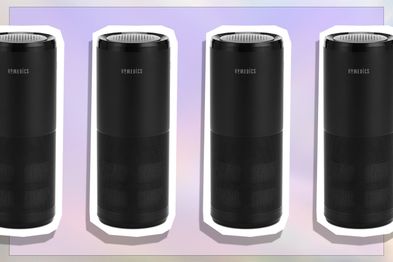
Perfect for small spaces, the HoMedics TotalClean is great as an all-in-one starter purifier. With UVC technology and a HEPA filter, it ticks all the boxes to ensure your air quality is clean. Just make sure you replace the filter every three months.
Philips UV-C Disinfection Air Cleaner

The Philips UV-C Disinfection Air Cleaner gets points for simple design and usability. It's also quiet while it does its thing and has an automatic shut-off time, which is a bonus for those who like to have a purifier in the bedroom. We especially love the intuitive display to show the progress of the air cleaning.
READ NEXT: Fight the heat with these portable air conditioners for every budget